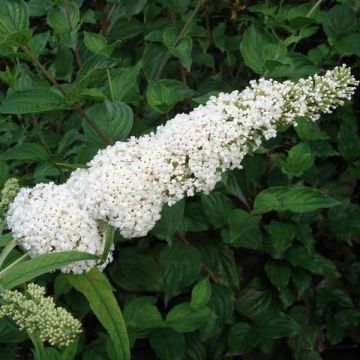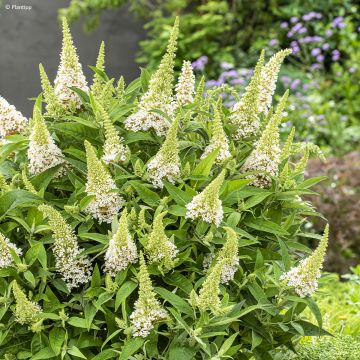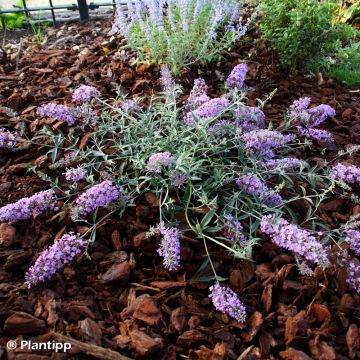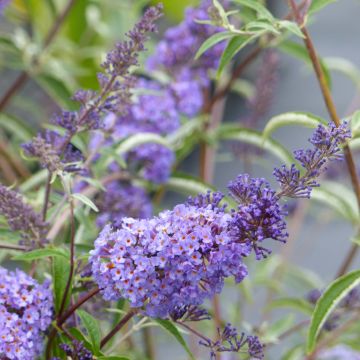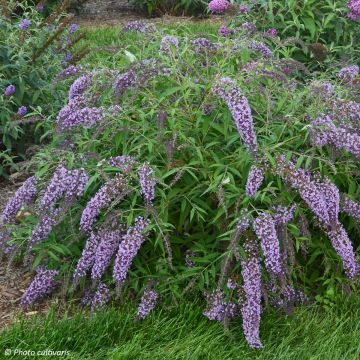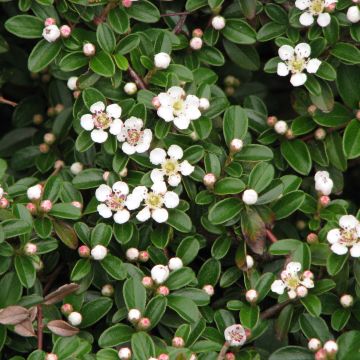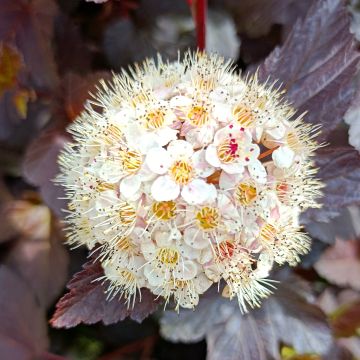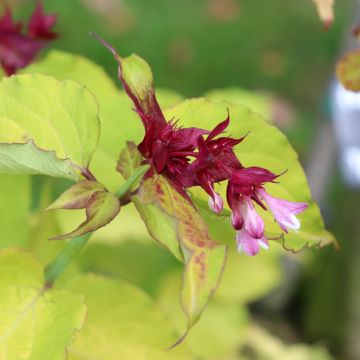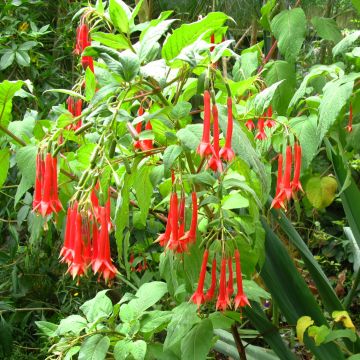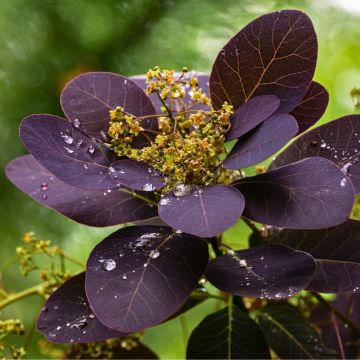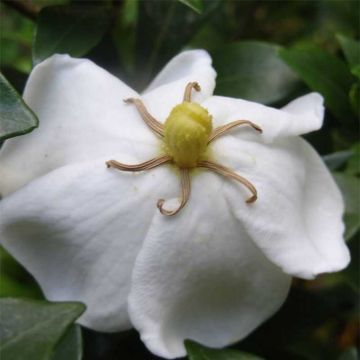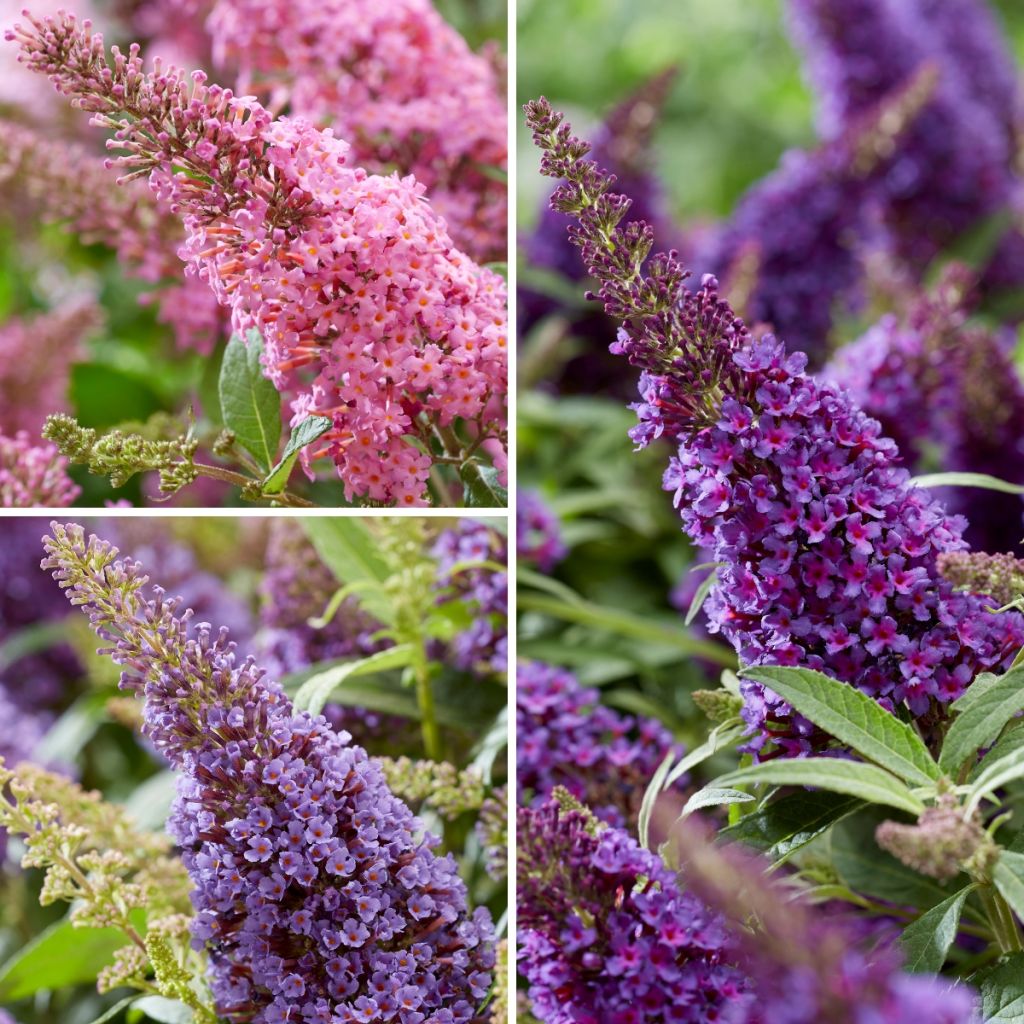

Buddleja davidii Butterfly Candy Little Purple, Little Pink, Little Lila - Butterfly Bush
Buddleja davidii Butterfly Candy Little Purple, Little Pink, Little Lila - Butterfly Bush
Buddleja x davidii Butterfly Candy® Little Purple, Little Pink, Little Lila
Butterfly Bush, Summer Lilac
This item cannot be shipped to the selected country
Delivery charge from €6.90
More information
Delivery charge from €6.90
More information
Schedule delivery date,
and select date in basket
This plant carries a 24 months recovery warranty
More information
We guarantee the quality of our plants for a full growing cycle, and will replace at our expense any plant that fails to recover under normal climatic and planting conditions.
From €7.90 for pickup delivery and €6.90 for home delivery
Express home delivery from €8.90.
Does this plant fit my garden?
Set up your Plantfit profile →
Description
Buddleja davidii Butterfly Candy Trio brings together 3 varieties of dwarf butterfly bushes called 'Little Purple', 'Little Pink', and 'Little Lila' in the same pot. These three small shrubs bloom together during long summer weeks, mixing their beautiful floral spikes in a delightful range of deep purple, light pink, and mauve. Together, they form a wide, gently scented bush where bees and butterflies gather. Hardy, easy to grow, and undemanding, the dwarf butterfly bush fits perfectly in small gardens and grows well in a large pot.
The genus Buddleja comprises about 100 species of deciduous or evergreen shrubs, native to China, Africa, South Asia and South America. Belonging to the Scrophulariaceae family, Buddleja davidii Butterfly Candy is a group of hybrids recently selected in the Netherlands by Botanic Experience BV and Dutch breeder Van Son & Koot from Kaatsheuvel.
Butterfly Candy Little Buddleja is a small plant with a rounded habit that does not exceed 80cm (32in). This variety develops well-branched vegetation, with short upright branches, giving it a balanced and compact habit that does not become bare at the base. The deciduous foliage falls in winter and regrows in spring. It consists of lanceolate, slightly velvety, greyish-green leaves. The flowering lasts for 4 to 5 months, from June-July to October, depending on the region. It is composed of small tubular flowers gathered in conical panicles at the end of the branches, each measuring 10 to 15cm (4 to 6in) long. The flowers release a sweet scent reminiscent of honey, highly sought after by pollinating insects and butterflies. In the summer, after each wave of flowers, light pruning encourages the buddleja to develop new flowering shoots. This hardy shrub resists urban pollution and does not suffer from moderate drought when planted in the ground. When grown in pots, it will require regular watering and some fertiliser to support its growth and flowering.
Gardeners will find a great diversity of varieties within the Butterfly Bush category, each more interesting than the next. Buddleja davidii Butterfly Candy Trio Little, with its intense "three-in-one" flowering, delicate fragrance, and modest size, is suitable for small spaces as well as container gardening. It easily pairs with other shrubs for containers. This shrub also blends well with many colourful perennials (asters, delphiniums, echinaceas, hemerocallis, kniphofias), rose bushes for borders, medium-sized grasses, or other small flowering shrubs such as dwarf abelias, for example. It can be planted near a terrace, along a path, in a small hedge, or in a shrub border.
Plant habit
Flowering
Foliage
Botanical data
Buddleja
x davidii
Butterfly Candy® Little Purple, Little Pink, Little Lila
Buddlejaceae
Butterfly Bush, Summer Lilac
Cultivar or hybrid
Other Buddleja -Butterfly bush
View all →Planting and care
The Butterfly Candy Trio is hardy and not very demanding in terms of soil. The dwarf buddleja appreciates sunny spots, but also flowers in partial shade. Plant it in spring or early autumn, in well-worked, well-drained, deep, ordinary soil. It can tolerate limestone. Once well established, the plant will tolerate periods of moderate drought. Buddleja has no significant enemies.
It can be planted in a container on a terrace or balcony. Choose a container of at least 30L. Make sure the container is perforated and create good drainage by filling the bottom with a layer of clay pellets or gravel. In pots, it will naturally require regular watering. In winter, move the pot to a sheltered location away from wind and only water if the potting soil becomes excessively dry.
In pots, the nutrient reserves diminish quickly. To stimulate flowering, add fertiliser once a year in spring. Use 1 to 3 handfuls of organic fertiliser (decomposed manure, compost, horn, blood, and specific fertilisers). Then, at least every two years, surface dressing should be practiced, which involves replacing at least the topsoil with fresh soil.
Planting period
Intended location
Care
This item has not been reviewed yet - be the first to leave a review about it.
Similar products
Haven't found what you were looking for?
Hardiness is the lowest winter temperature a plant can endure without suffering serious damage or even dying. However, hardiness is affected by location (a sheltered area, such as a patio), protection (winter cover) and soil type (hardiness is improved by well-drained soil).

Photo Sharing Terms & Conditions
In order to encourage gardeners to interact and share their experiences, Promesse de fleurs offers various media enabling content to be uploaded onto its Site - in particular via the ‘Photo sharing’ module.
The User agrees to refrain from:
- Posting any content that is illegal, prejudicial, insulting, racist, inciteful to hatred, revisionist, contrary to public decency, that infringes on privacy or on the privacy rights of third parties, in particular the publicity rights of persons and goods, intellectual property rights, or the right to privacy.
- Submitting content on behalf of a third party;
- Impersonate the identity of a third party and/or publish any personal information about a third party;
In general, the User undertakes to refrain from any unethical behaviour.
All Content (in particular text, comments, files, images, photos, videos, creative works, etc.), which may be subject to property or intellectual property rights, image or other private rights, shall remain the property of the User, subject to the limited rights granted by the terms of the licence granted by Promesse de fleurs as stated below. Users are at liberty to publish or not to publish such Content on the Site, notably via the ‘Photo Sharing’ facility, and accept that this Content shall be made public and freely accessible, notably on the Internet.
Users further acknowledge, undertake to have ,and guarantee that they hold all necessary rights and permissions to publish such material on the Site, in particular with regard to the legislation in force pertaining to any privacy, property, intellectual property, image, or contractual rights, or rights of any other nature. By publishing such Content on the Site, Users acknowledge accepting full liability as publishers of the Content within the meaning of the law, and grant Promesse de fleurs, free of charge, an inclusive, worldwide licence for the said Content for the entire duration of its publication, including all reproduction, representation, up/downloading, displaying, performing, transmission, and storage rights.
Users also grant permission for their name to be linked to the Content and accept that this link may not always be made available.
By engaging in posting material, Users consent to their Content becoming automatically accessible on the Internet, in particular on other sites and/or blogs and/or web pages of the Promesse de fleurs site, including in particular social pages and the Promesse de fleurs catalogue.
Users may secure the removal of entrusted content free of charge by issuing a simple request via our contact form.

































